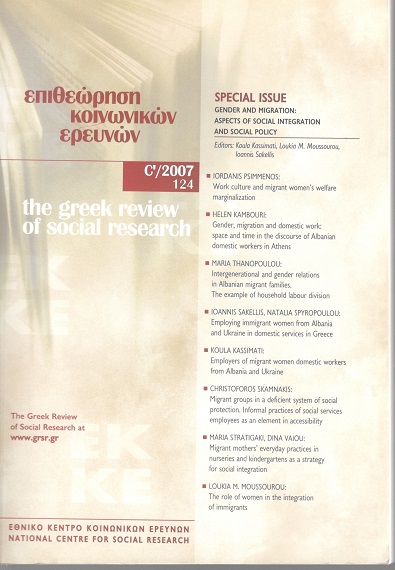Industrial movements in Greek industry: Intragenerational trends
Abstract
This paper presents intragenerational trends in industrial
mobility rates of employees in Greek industry and analyses
variations of rates by means of individual’s socioeconomic features
and characteristics of their social and industrial environment
particularly.
Intragenerational mobility is restricted to inter industrial
movements and in this context the following will be studied:
(i) job changes during respondent’s life, (ii) intragenerational
occupational mobility during the period 1965-1974 and (iii)
reasons motivating respondents to change or stay in the same
job. To achieve these aims a sample of one thousand industrial
workers employed in one hundred establishments of the
Greater Athens area were extensively interviewed. The sampling
design was based on the principles of two stage random
sample (with the self weighing estimator).
Article Details
- How to Cite
-
Kassimati, K. (1977). Industrial movements in Greek industry: Intragenerational trends. The Greek Review of Social Research, 29, 127–140. https://doi.org/10.12681/grsr.341
- Issue
- 1977: 29 Α'
- Section
- Articles

This work is licensed under a Creative Commons Attribution-NonCommercial 4.0 International License.
Authors who publish with this journal agree to the following terms:
- Authors retain copyright and grant the journal right of first publication with the work simultaneously licensed under a Creative Commons Attribution Non-Commercial License that allows others to share the work with an acknowledgement of the work's authorship and initial publication in this journal.
- Authors are able to enter into separate, additional contractual arrangements for the non-exclusive distribution of the journal's published version of the work (e.g. post it to an institutional repository or publish it in a book), with an acknowledgement of its initial publication in this journal.
- Authors are permitted and encouraged to post their work online (preferably in institutional repositories or on their website) prior to and during the submission process, as it can lead to productive exchanges, as well as earlier and greater citation of published work (See The Effect of Open Access).




